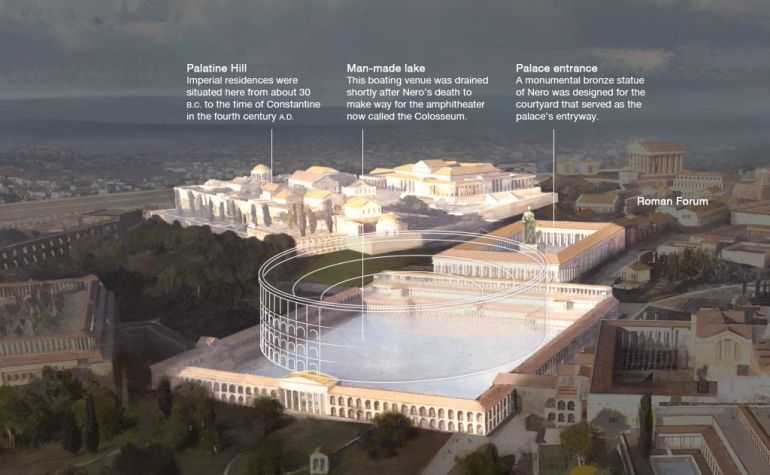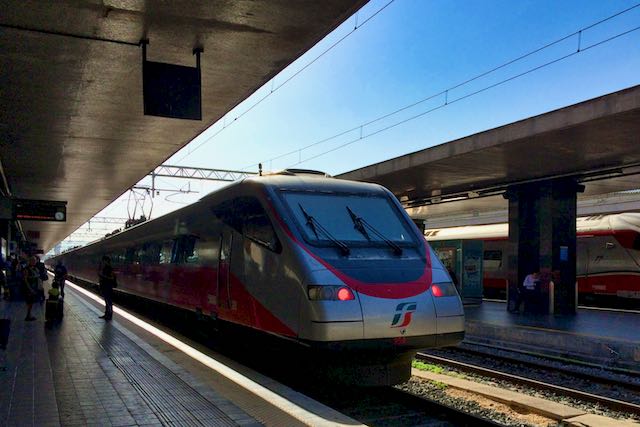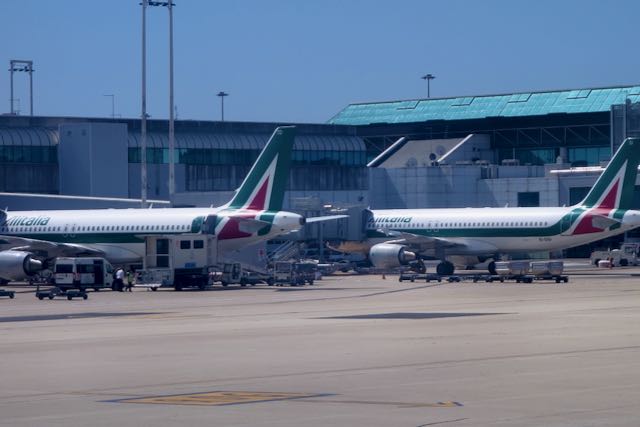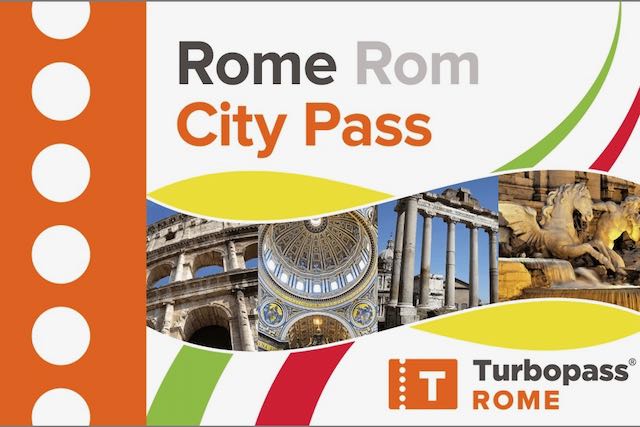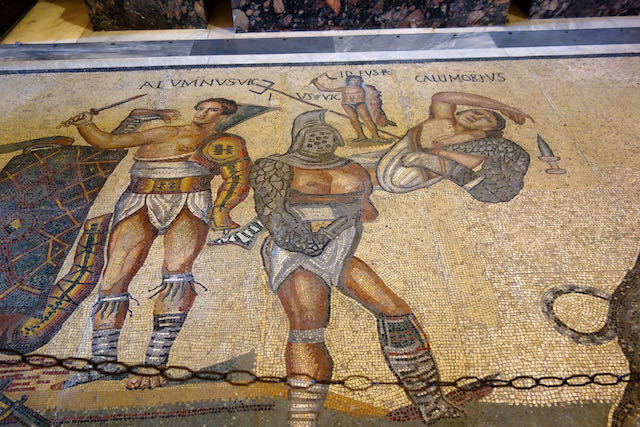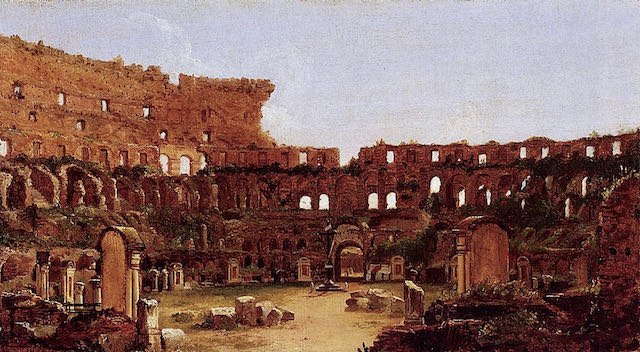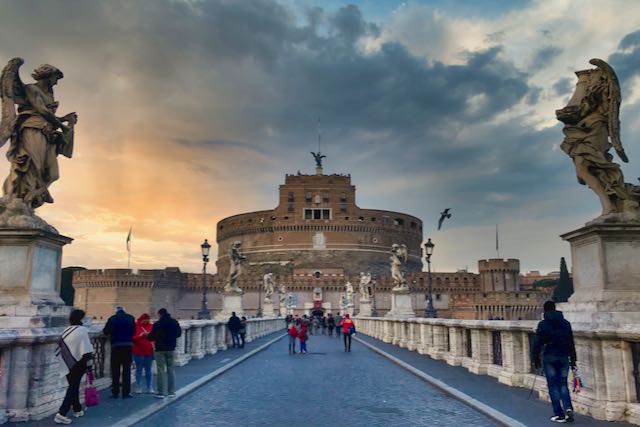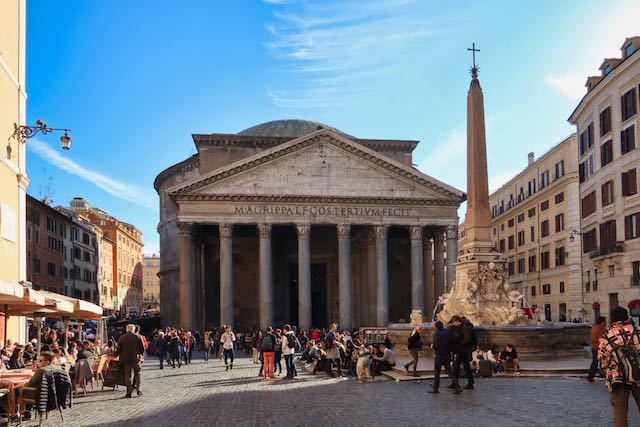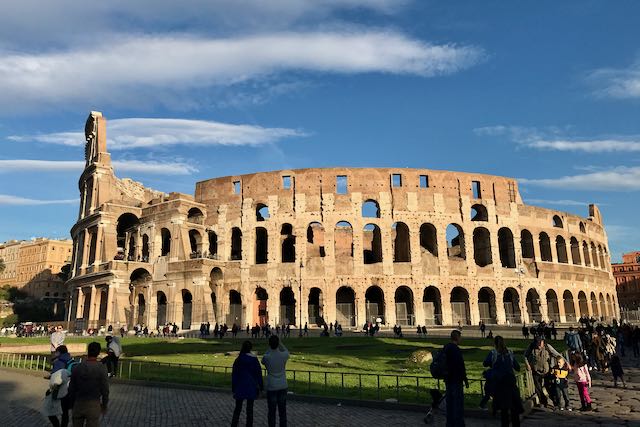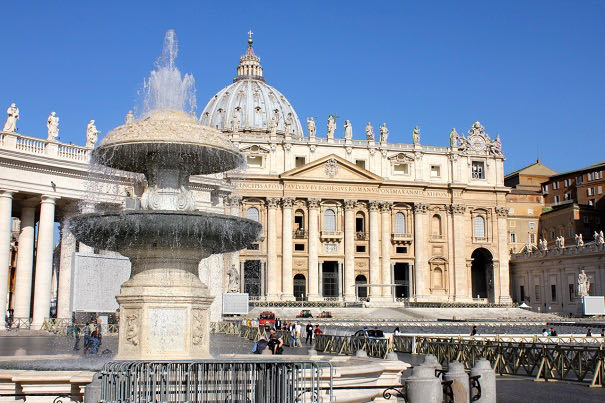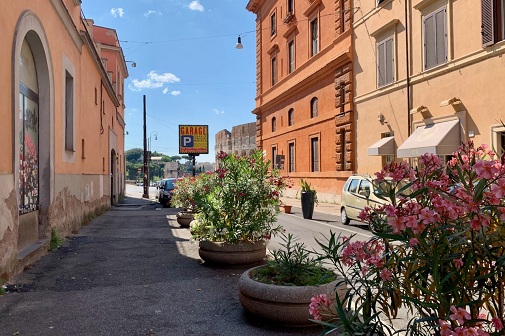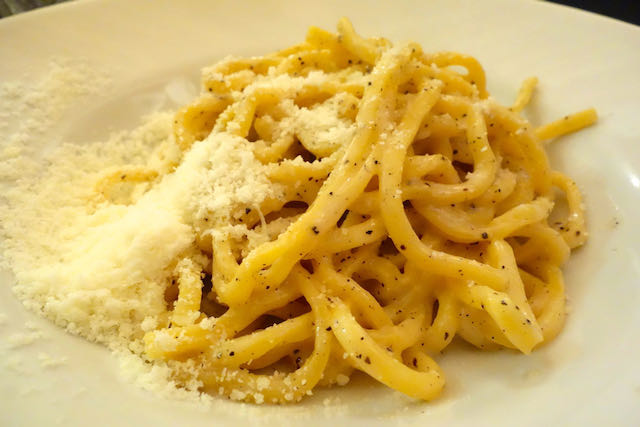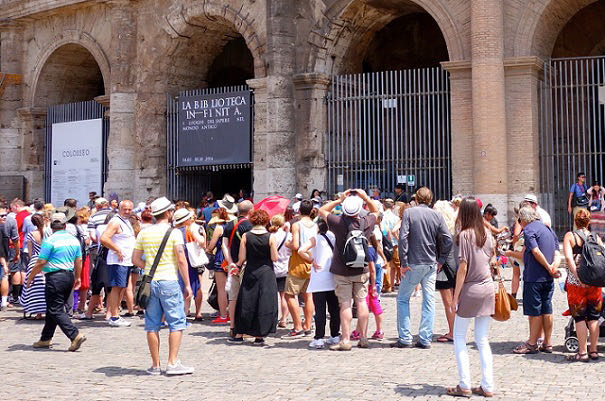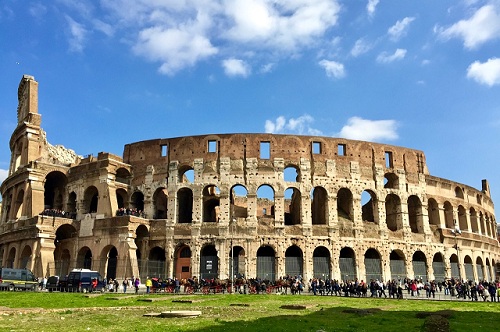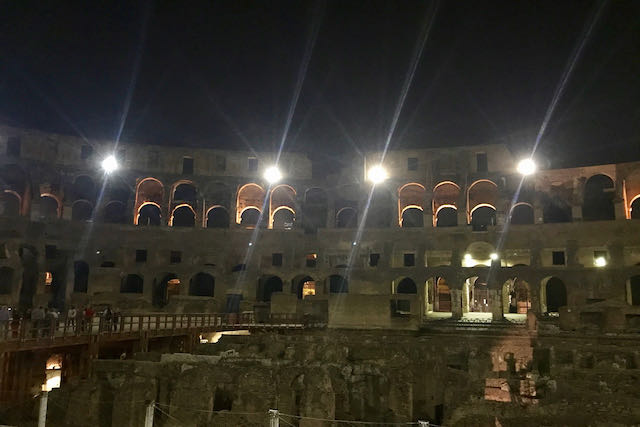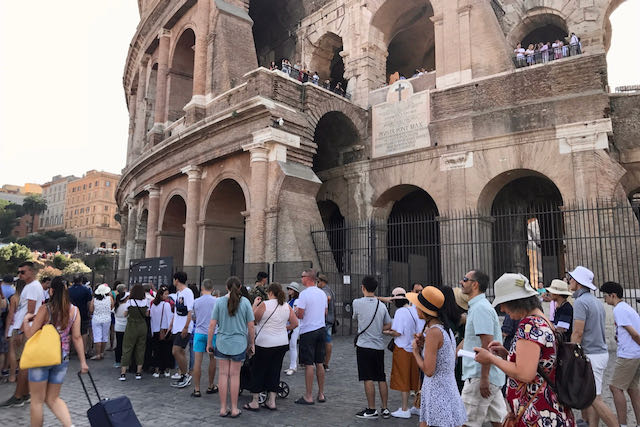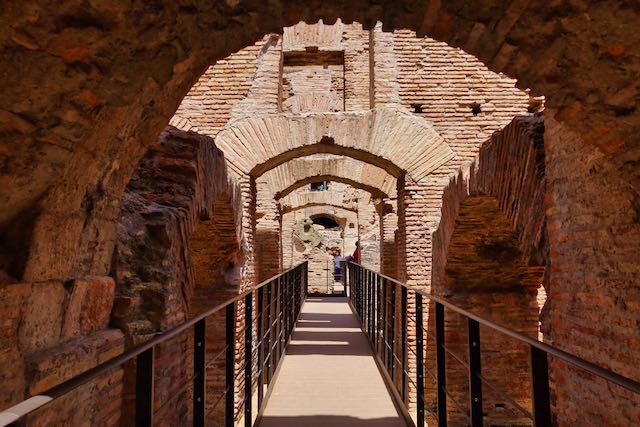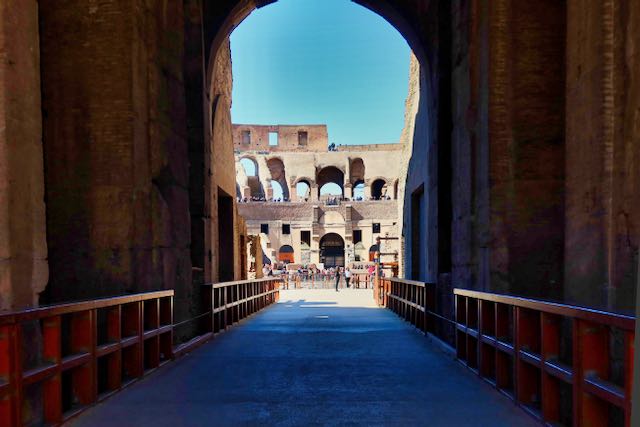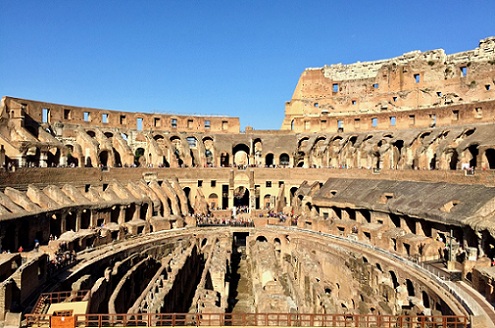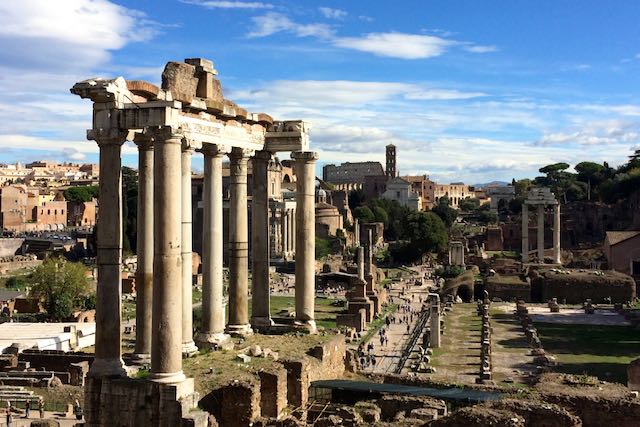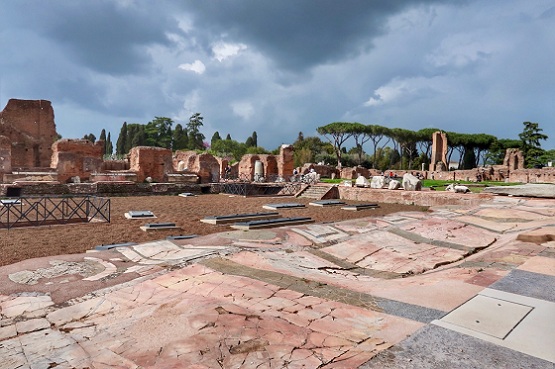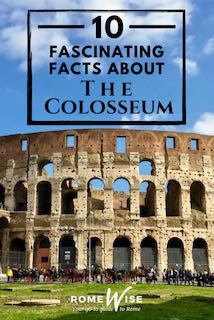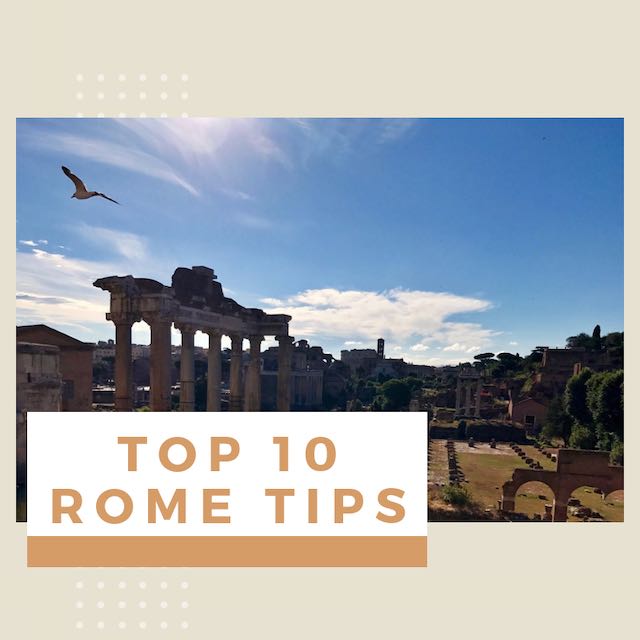- Sign up & get a FREE ebook Subscribe Today!
- Romewise Home Page
- Rome Italy Colosseum
- Colosseum Facts
10 Fascinating Facts About the Roman Colosseum
What are some of the most fascinating facts about the Roman Colosseum?
Like how, when and WHY it was built? Who constructed the Colosseum? What happened in there - to both humans and other exotic animals? And why it has holes in it? Find out here!
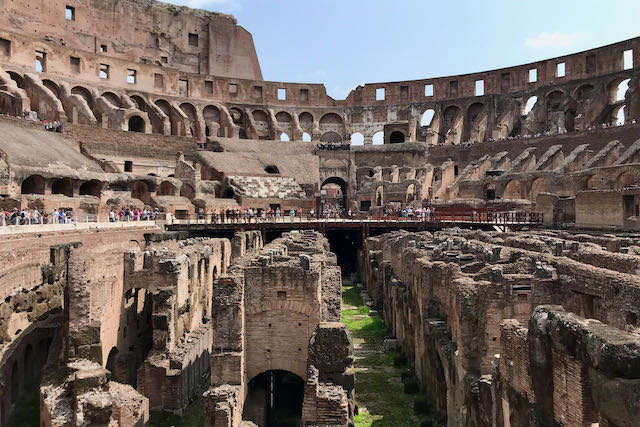 Find out amazing facts about the Colosseum - when, how, and why it was built, what happened in there, and what was there before it!
Find out amazing facts about the Colosseum - when, how, and why it was built, what happened in there, and what was there before it!Facts About the Roman Colosseum
I could easily list hundreds of interesting facts about the Colosseum!
I've tried to keep it to ten that I think answer the questions I hear the most.
But actually, I've peppered this page with quite a few more fun tidbits, like where we got the word "vomit" from, and how the Colosseum was nearly turned into a wool factory...
On this page, we'll cover:
- How, when, and why the Colosseum was built and who commissioned it?
- What happened inside the Colosseum in Ancient Rome? How gladiators fought each other? Did they really feed Christians to lions in ancient Rome stadiums?
- When did they stop using the Colosseum? What was it used for after the Western Roman Empire fell?
- Facts about the Colosseum today
How, when, and why the Colosseum was built
1 - The Colosseum was built on the site of a giant man-made lake
The Roman Republic had come to an end, and the time of the Emperors and Imperial Rome had begun. A few centuries after the first Emperor Augustus changed the face of Rome forever, the decadent, egotistic Emperor Nero built a gigantic villa for himself, called the Domus Aurea.
It included an enormous man-made lake.
After Nero committed suicide in 68 CE, the Senate issued a Damnatio memoriae on him, meaning, let's condemn his memory and remove all traces of him.
who commissioned the colosseum?
A couple of years after Nero's death, Roman Emperor Vespasian was the victor in the civil wars that followed. He decided to remove Nero's lake and put an arena there, to entertain the people and make them focus on fun and forget the hated Nero.
In doing so, Vespasian also showed the Roman world he was a man of the people, unlike Nero who'd taken all that land just for himself.
2 - The Colosseum was built in UNDER 10 Years, mostly by Jewish slaves
Emperor Vespasian and his son Titus had conquered Judea (Jerusalem), and had brought back with them many spoils of war, including artifacts from the temple taken by soldiers in the Roman army.
This story is depicted on the Arch of Titus, just near the Colosseum inside the Roman Forum.
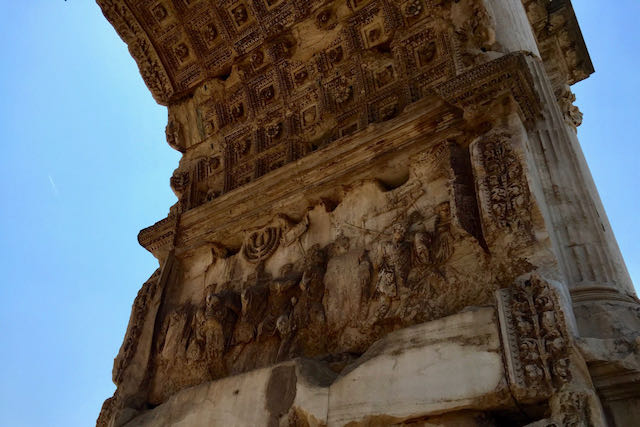 This closeup of the inside of the Arch of Titus shows the Romans returning victorious after destroying the temple in Jerusalem, and bringing back Jewish prisoners of war, and items from the temple.
This closeup of the inside of the Arch of Titus shows the Romans returning victorious after destroying the temple in Jerusalem, and bringing back Jewish prisoners of war, and items from the temple.They also brought back with them about 100,000 Jewish slaves.
Many of these men were put to (unpaid) work doing the hard stuff like dragging quarried Travertine rock from Tivoli all the way to Rome.
(Other more skilled citizens of Rome, such as architects, artists and engineers, were paid to do the more artistic and specialized work that was a feature of Roman architecture)
How old is the Rome Colosseum?
Vespasian began work on the Colosseum in around 70 or 71 CE.
He died in 79 CE and his son Titus became emperor.
Titus finished the Colosseum in 80 CE.
How many people could fit in the Colosseum?
It could seat from 50,000 - 80,000 people and was the first permanent amphitheater built in Rome, a marvel of the ancient world, right next to the roman forum.
Who built the Colosseum underground?
A few years after the Colosseum was built, the last Emperor of the Flavian Dynasty, Titus' brother Domitian added the highest tier, and also the Hypogeum, or underground complex, where animals and fighters were held until showtime.
what did the colosseum look like?
When you visit the Colosseum, you will automatically walk through the permanent exhibit there.
It's really fascinating and along the way, you'll get to see some renderings of how the Colosseum once looked, not only in Ancient Rome when it was filled with Greek and Roman art and sculpture, but also through the years:
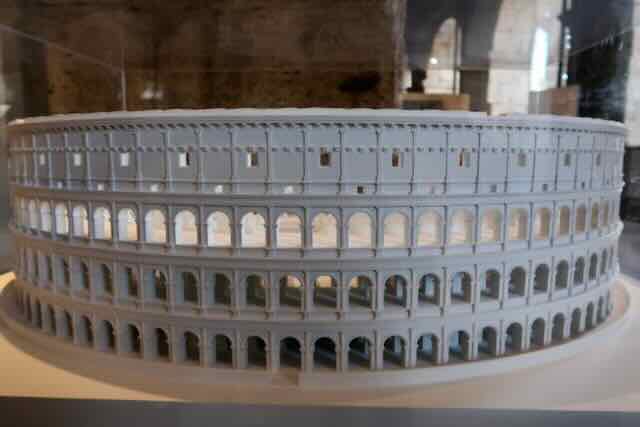 What did the Colosseum look like in Ancient Rome? When you visit the Colosseum, you will see this model in the permanent exhibit there.
What did the Colosseum look like in Ancient Rome? When you visit the Colosseum, you will see this model in the permanent exhibit there.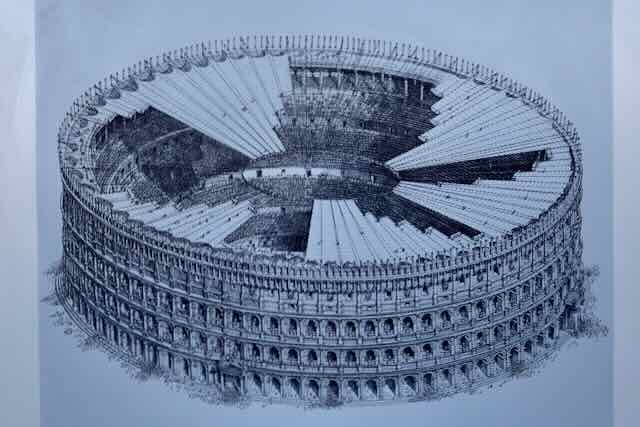 Did the Colosseum have a roof?
This rendering of the Colosseum from Ancient Rome, which you can see in the permanent exhibit of the Colosseum in Rome, shows the "velaria", or wings that were used to cover the Colosseum in inclement weather or during hot summers.
Did the Colosseum have a roof?
This rendering of the Colosseum from Ancient Rome, which you can see in the permanent exhibit of the Colosseum in Rome, shows the "velaria", or wings that were used to cover the Colosseum in inclement weather or during hot summers.How big is the Roman Colosseum? How tall is it?
The Colosseum is elliptical, and is 189 meters (615 ft) long and 156 meters (510 ft) wide with a base area of 24,000 m² (6 acres) and a height of 48 meters (157 ft.)
The Colosseum in Rome Italy was then, and still is today, the largest of the Roman amphitheaters anywhere in the world, an iconic ancient stadium in Rome.
3 - The Colosseum got its nickname from Nero's giant statue
The amphitheater was built by one family, Vespasian and his sons Titus and Domitian of the Flavian Dynasty.
What was the Colosseum originally called?
It was named for the emperors that created it: The Flavian Amphitheater.
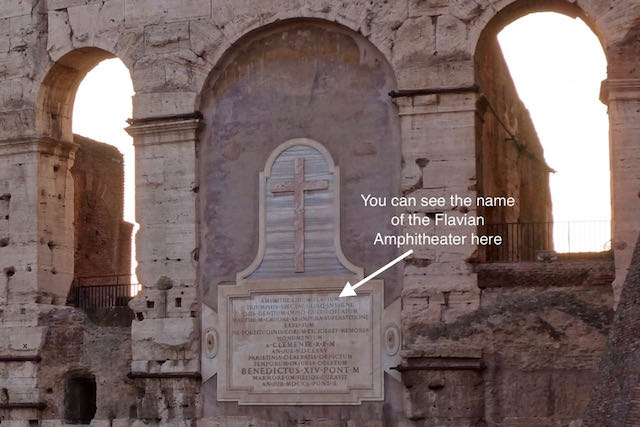 You can see a couple of inscriptions on the walls of the Colosseum that refer to the "Flavian Amphitheater", it original name.
You can see a couple of inscriptions on the walls of the Colosseum that refer to the "Flavian Amphitheater", it original name.Back to ego-maniac Nero - he'd also had a giant 100-foot bronze statue made of himself.
After Nero's death, Vespasian replaced the face and called it a sun-god statue.
The statue was later moved (with the help of 24 elephants) by the Emperor Hadrian, in 124 CE, to just next to the Amphitheater.
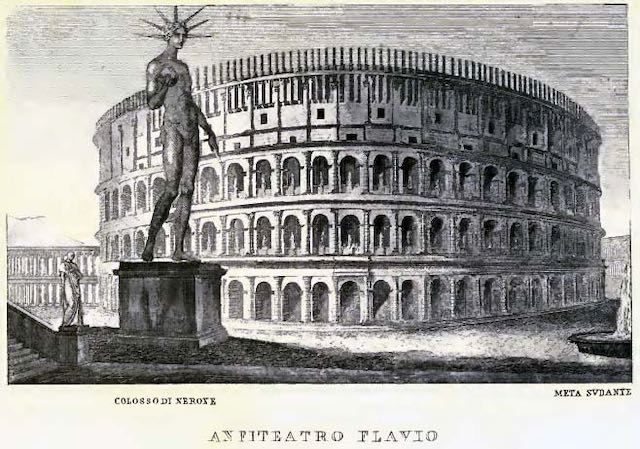 This sketch shows what the giant colossus of Nero, turned into Helios, the sun god, might have looked like once the Colosseum was built.
This sketch shows what the giant colossus of Nero, turned into Helios, the sun god, might have looked like once the Colosseum was built.The statue is long gone, and nobody knows where it went.
There was never a clear rendering of it, so any depiction you see today, including on this page, are guesses as to how it looked.
However, thanks to coins of the period, we do have some idea of what things looked like back then. (Coins, by the way, are also how we know how a lot of stuff looked in ancient Rome!)
But it was called a Colossus, and many scholars believe this is where the Flavian Amphitheater got its current nickname.
The word for Colosseum in Italian is Colosseo.
This is the name of the Metro stop at the Colossum.
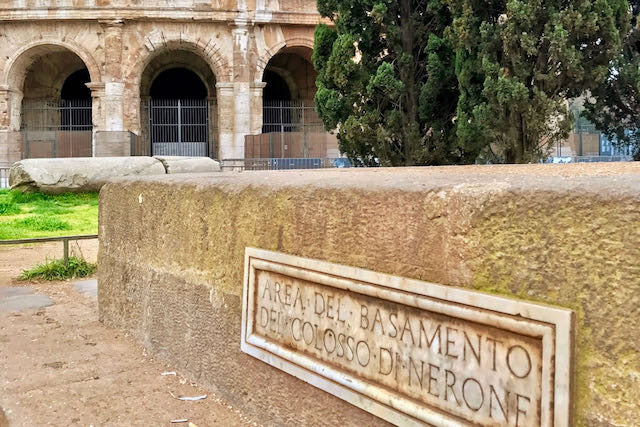 Most people have no idea that the original base that Hadrian had built for Nero's colossus is still standing, right next to the Colosseum.
Most people have no idea that the original base that Hadrian had built for Nero's colossus is still standing, right next to the Colosseum.Want more information about the Colosseum in Rome and how to visit it?
Check out my YouTube videos!






Facts about the Roman Colosseum - what went on in there
4 - Over a million animals, and nearly half a million people died in the Colosseum
The main purpose of the Colosseum in Rome was to entertain the people.
When Titus inaugurated the amphitheater in 80 CE, he held 100 days of activities.
In that time, over 9000 animals were killed, and according to some, 5000 of them were killed in a single day. Around 2000 people died as well.
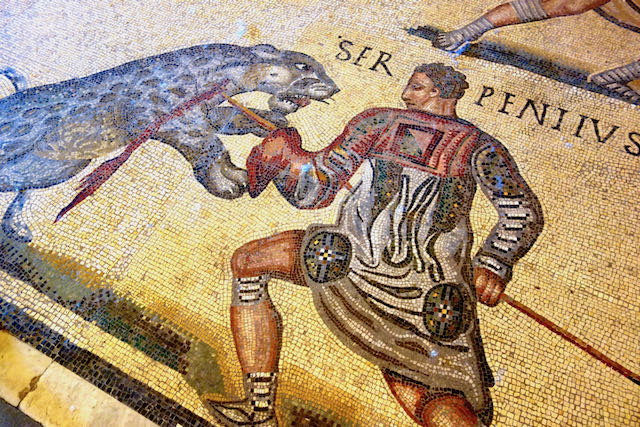 In this mosaic from the Galleria Borghese, we see historical evidence of gladiators fighting wild beasts in the Colosseum.
In this mosaic from the Galleria Borghese, we see historical evidence of gladiators fighting wild beasts in the Colosseum.About 30 years later, Emperor Trajan held 123 days of games, in which thousands of people and animals were slaughtered.
The animals came from all over the Roman empire.
They were of a vast variety of species, from lions, tigers and bears, to horses, ostriches, rhinos and crocodiles.
There was such a global demand for wild animals over the hundreds of years the Colosseum was in use, some animals disappeared entirely from their natural habitat, leading to the eventual extinctions of some species.
5 - It was free for Romans to attend the games
The Colosseum interior capacity was between 50,000 and 80,000 people.
Entrance to the games was free.
Spectators were given numbered pottery shards as tickets. These indicated the appropriate section and row, according to their social status.
Roman women and slaves were at the very top, down to the important men of the Roman senate at the bottom, closest to the arena.
There were 76 entrances for spectators, and they were numbered. You can still see the numbers today.
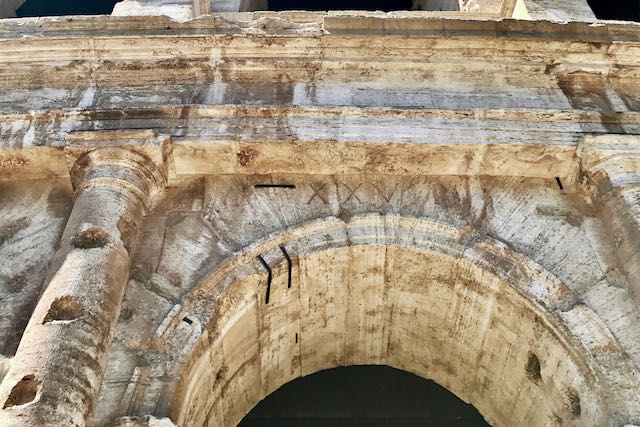 A closeup of one of the entrances to the Colosseum - with the original Roman numerals indicating which section it was and where spectators should sit
A closeup of one of the entrances to the Colosseum - with the original Roman numerals indicating which section it was and where spectators should sitFour other entrances were reserved for the emperor, and for other people of importance including patricians, visiting dignitaries, and Vestal Virgins.
A retractable awning called the Velarium could be pulled almost entirely over the structure, providing cover and in case of rain or heat.
One of the stranger facts about the Roman Colosseum involves the Vomitoria
The word "Vomit" comes from Vomitorium - the verb meaning "to disgorge."
The vomitoria were the passageways that ran along the entire building behind and and beneath the seating tiers, to help with the flow of spectators.
Because of the vomitoria, The Colosseum could be filled or emptied in 15 minutes.
6 - Not all events and games in the Colosseum ended in death
There was a daily schedule of events in the Roman Coliseum:
- In the morning, there were animal shows. Sometimes it was just a parade. Or, there may have been animal hunts, called venationes, in which whole stage sets would be used to replicate a hunting environment. Emperors sometimes took part in these, shooting at animals with a bow and arrow from the security of their seat. The emperor Commodus, depicted in Ridley Scott's movie Gladiator, was one emperor who enjoyed shooting at animals during these hunts, and was supposedly very good with a bow and arrow.
- Part of the animal games were the Bestiarii - gladiators trained to fight the wild animals, sometimes with background scenery.
- And, still part of the animal portion, sometimes condemned criminals were sentenced to fight wild animals, with nothing to fight with or protect themselves with.
- During these animal games, animals did not always die, although they did more often than not.
There were 36 trap doors in the Colosseum arena allowing for elaborate special effects.
Often, animals, many of whom had been starved and/or beaten, were kept underneath the floor, in the Hypogeum, and then raised up to the Colosseum floor at showtime.
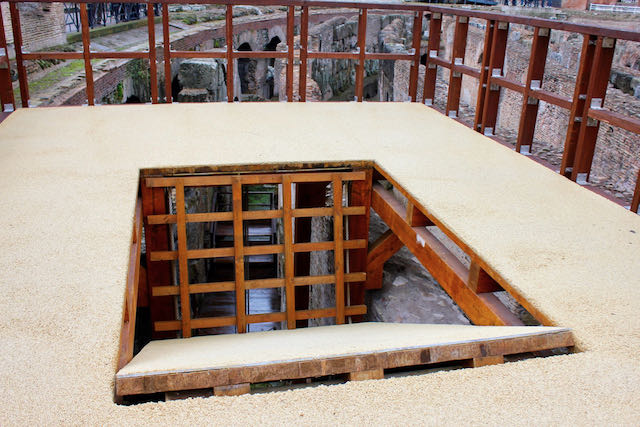 You can see this model of a trapdoor that was used in the ancient Colosseum in Rome, when you take a tour of the underground (Hypogeum)
You can see this model of a trapdoor that was used in the ancient Colosseum in Rome, when you take a tour of the underground (Hypogeum)You can take a tour of the Colosseum underground, and you will see this trapdoor, along with the tunnels and more details about how things worked when there were games in the Colosseum.
And, if you visit the Colosseum at night, you can see the arena floor, the trap door, the Hypogeum, and all the workings underneath, without the crowds!
I highly recommend both of these tours!
- At noon, there were executions, sometimes using torture, sometimes using wild animals to attack a tied up prisoner.
- In the late afternoon, the most "interesting" and important part of the day's schedule was the gladiator fights. In some cases, battles were re-enacted. In some cases it was a fight to the death, but sometimes it was just a fight between gladiators, with neither dying.
For us today all this violence on a regular basis seems extreme, but in the Roman world it was completely normal. The most successful became famous Colosseum gladiators, like modern-day celebrities!
Myth or Facts? - were Christian martyrs fed to the lions?
Probably not.
Or at least not specifically because they were Christian.
There is no historical evidence that early Christian martyrs were condemned to be eaten by lions, or otherwise executed in the Colosseum, purely for their faith.
But by now, the Colosseum has become a symbol of Christian martyrdom, and every Easter, the Pope walks the Via Crucis, finishing at the Colosseum.
The Roman Colosseum - When they stopped using it and what happened next
7 - The Colosseum was used throughout the Middle Ages and Renaissance, but not for games
The last gladiatorial games were held in 435 CE.
The last animal hunts stopped in 523 CE, despite a ban on animal sacrifice more than 200 years prior.
It simply became too expensive to procure these wild animals, to house and train gladiators and to continue putting on the sometimes elaborate spectacles.
Colosseum facts - exactly when where the last Gladiator games in the Colosseum?
In researching when the last gladiator games were held in the Rome Colosseum, I found two dates: January 1, 404, and the year 438.
The first date, January 1, 404, is part of a Christian story about a monk, Telemachus, who was horrified by the bloodshed he witnessed, and tried to stop a contest between two gladiators. The enraged crowd stoned him to death. The Christian Emperor Honorius, touched by the monk's actions, banned gladiator fights from that day. The monk Telemachus subsequently became a saint.
The second date, the year 438 (less precise as to the exact date), is when the Emperor Valentinian III banned the games permanently.
So it may be that there is a discrepancy in when the gladiatorial games in the Colosseum definitively ended, perhaps depending on your point of view and/or field of study.
It may also be that both are correct, and that it took more than one emperor to finally ban the games for good.
how was the colosseum destroyed?
How did the Colosseum break in places? There had been earthquakes over the centuries, which caused some of the marble and brick structure to fall down, but it never destroyed the Colosseum entirely.
But after the fall of the Western Roman Empire in the 5th century, it fell into disuse.
The underground (hypogeum) was filled in, and for a few centuries, the Romans used the Colosseum as a place to live, grow gardens, conduct business, run workshops, and quite a few other things.
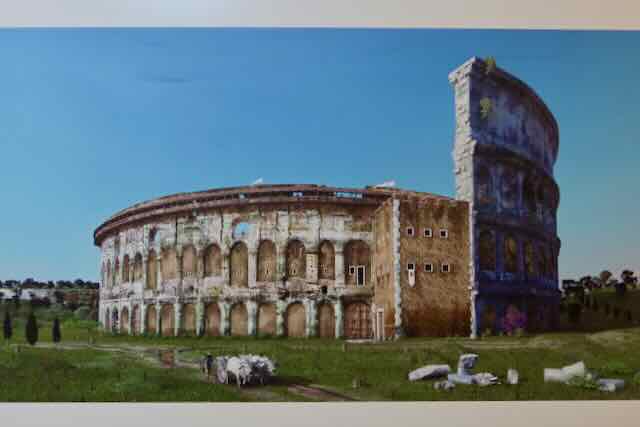 In this painting, which you can see when you visit the permanent museum inside the Colosseum, the Colosseum is shown as it was when the powerful Frangipani family had control over it in the 13th century.
In this painting, which you can see when you visit the permanent museum inside the Colosseum, the Colosseum is shown as it was when the powerful Frangipani family had control over it in the 13th century.One of my favorite odd facts about the Roman Colosseum is that in the late 16th century, Pope Sixtus V tried to turn the Colosseum into a wool factory to give prostitutes other employment.
He died in 1590, and the project never got off the ground (no pun intended.)
One of the more curious facts about the Colosseum is that it's an important place of study for botanists.
A lot of plant life flourished inside the Colosseum, certainly after it was no longer used for games.
In 1643, botanists began cataloging the plants inside the Colosseum and found several hundred different species of plants growing there. There are fewer species now but it's still a unique flora ecosystem.
8 - Why the Colosseum has holes
The Colosseum was built from travertine stone and tufa, both local, limestone-based stones.
Mortar was not used - iron clamps held the stones together instead.
The outside would have been impressive, covered in marble.
The niches held statues.
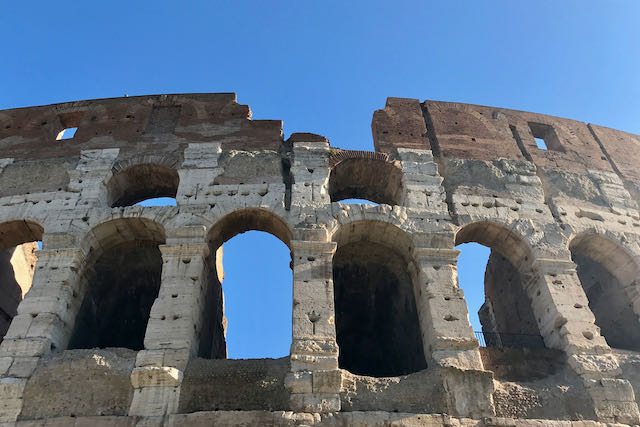 You can easily see holes all around the walls of the Colosseum, in particular on the inner building. That's from the iron clamps that used to hold the stones together.
You can easily see holes all around the walls of the Colosseum, in particular on the inner building. That's from the iron clamps that used to hold the stones together.An estimated 200-300 tons of iron clamps were used.
In the Middle Ages, all that iron was simply pilfered, and used for other things, mostly weaponry.
So now we are left with a lot of holes.
The perfect 3-day itinerary in Rome
Trying to figure out how to organize your visit to Rome? I've got the perfect 3-day itinerary for first-time visitors (or those who have not been here in a while.) It works for a 2.5 day visit as well.
In my 3-day itinerary, you'll see all the major must-see Rome attractions like the Vatican, Colosseum, Trevi Fountain, Pantheon, Piazza Navona, Spanish Steps, Castel Sant'Angelo, and much more.
And if you have more time, or want suggestions for extra/other things to do, you'll find that there too.
Visit my page with the best 3-day itinerary in Rome for first-timers.
9 - Much of the ancient Colosseum was used to build other structures in Rome, namely Saint Peter's Basilica
Over the centuries, there were quite a few natural disasters, including fires and earthquakes, that caused destruction of the Colosseum.
Earthquakes in 847 CE and 1231 CE caused most of the damage you see today.
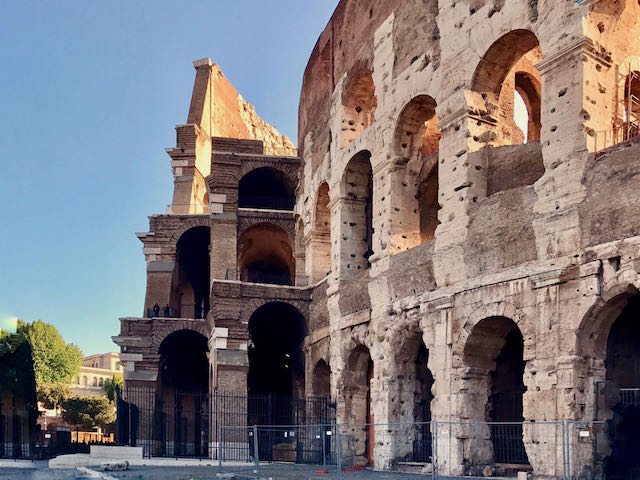 You can see the inner shell of the Colosseum, and, part of the outer wall, which remained standing after several earthquakes
You can see the inner shell of the Colosseum, and, part of the outer wall, which remained standing after several earthquakesAnd in those days, there was no reason to rebuild it.
On the contrary, it further helped provide people with building material for other projects, as pieces of the Colosseum fell to the ground during the quakes.
The Colosseum had a marble façade, and marble seats on the inside. When they were looking around for material to build the (new) Saint Peter's Basilica in the 15th century, they figured the Colosseum was the closest "quarry."
So when you visit Saint Peter's today, you are also visiting part of the Colosseum.
Disclosure: If you make a purchase through a link on this page, I may receive a small commission - at no extra cost to you. Thank you for supporting my site!
Facts About the Roman Colosseum Today
10 - The Rome Colosseum is the most visited site in Italy
Other than the Vatican (which is not part of Italy), the Colosseum is the most visited site in Italy, and the most visited monument in Rome, with 12 million visitors in 2023.
For lots more Colosseum in Rome information, such as how to get tickets, what to see, how to book special visits, and more, visit my related pages here:
All about the Rome Colosseum
Want more facts about the Roman Colosseum?
If you would like more details and information about the Roman Colosseum, and its history, building materials and other data, there is also an excellent, well-researched privately published website, The Colosseum.
You will also find more facts about the Roman Colosseum and other information on the Official Page of the Colosseum in Rome.
Finally, try the History Channel Colosseum page.
Romewise's Top Travel Resources
Ready to book your trip to Rome? Take a look at all our favorite travel resources and suggestions:
Choosing your accommodation
- Once you have decided which part of Rome to stay in, you can start looking for accommodation in your preferred area. For hotels we like to use booking.com but if you prefer to have your own space or are staying for a longer period, try VRBO or Plum Guide for top quality apartments.
Booking your flights
- Using Skyscanner to book your flights to Rome means you have access to lots of great tools. Search by specific dates or use their helpful tool which shows you when the cheapest options are available for your chosen route.
Getting around in Rome
- While using public transportation is easy in Rome, I would recommend organizing your airport transfers ahead of time for a smooth journey to and from your accommodation.
- Take advantage of Italy's excellent railways to travel further afield with Trainline. It gives you access to timetables and live departure times, you can book online well in advance or last minute and all the tickets are stored digitally on your phone.
- Find out more about taking taxis in Rome, the metro system and how to book one of Rome's many bus tours.
What to pack for Rome
- Our essential packing recommendations are here, along with a downloadable packing list to make sure you don't forget anything!
- Looking to replenish your travel wardrobe? Check out the Romewise Amazon store for some of our top recommendations.
Tours and Activities
- There's so much in Rome to explore that it can sometimes be overwhelming to do it by yourself, so taking a tour with a top-quality provider is a great way to make the most of your trip.
- We recommend booking your Rome tours with one of our approved partners, all of which have expert guides, great booking options and availability:
- TakeWalks offer more unusual and exclusive access to some of Rome's most popular sites, along with some incredible food tours.
- GetYourGuide, Tiqets and Viator all offer a huge range of tours and experiences, ranging from simple entry tickets to in-depth tours.
- You can also book your Rome city passes in advance - find out which one is right for you here.
- Traveling elsewhere in Italy or planning to take some day trips from Rome? Take a look at some of our favorite places for inspiration!
Travel Insurance
- One thing you should absolutely not forget to arrange for a trip to Rome is travel insurance! Having peace of mind just in case something happens is priceless.
Want to save this page of Facts About the Roman Colosseum to Pinterest? Pin it here!
Get your 100% free Rome trip planner now!
Simply sign-up today for our free newsletter and get the Romewise Quick Start guide to Rome:
We are committed to respecting your data. Click for our Privacy Policy.
Comments? Questions? Suggestions?
Please come over to the private Romewise Facebook group and join in the conversation.
You will often find me there, happy to answer your questions / comments!
You will also meet other Rome lovers and experts, too.
What are you waiting for?
- Romewise Home Page
- Rome Italy Colosseum
- Colosseum Facts

